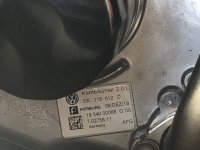C
Chapmac
Hi folks - looking to buy our first California and budget will stretch to an early 5.1 model. I am aware of the engine issues on the 180bhp cars, thanks to this forum, but there seems to be many more 180 than 140bhp vehicles around of this vintage. Also a more powerful engine would be preferable personally.
Two questions really. Firstly as per the thread title. As these cars are now 9-10 years old, if there was likely to be a problem, would it have manifested by now?
Secondly - is there any way to spot potential engine issues when inspecting a vehicle yourself, or indeed if you have a professional inspection?
Thanks
Dom.
Two questions really. Firstly as per the thread title. As these cars are now 9-10 years old, if there was likely to be a problem, would it have manifested by now?
Secondly - is there any way to spot potential engine issues when inspecting a vehicle yourself, or indeed if you have a professional inspection?
Thanks
Dom.















